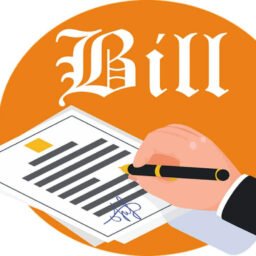INTRODUCTION
The Insolvency and Bankruptcy Code (Amendment Bill), 2021 was recently introduced in the Lok Sabha by the government to replace the Insolvency and Bankruptcy Code Amendment Ordinance 2021 which was introduced in April 2021. Amendments were recommended by the Insolvency law Committee (ILC) constituted by The Ministry of Corporate Affairs in the Insolvency and Bankruptcy Code, 2016[1]. Further, the ILC in March recommended a pre-pack framework within the Insolvency and Bankruptcy Code, 2016 further referred as IBC, 2016. An alternative insolvency resolution process was introduced by the committee for the Micro, Small, and Medium Enterprise, whose defaults extend up to Rs. 1 crore, called the Pre-Packaged Insolvency Resolution Process or PIRP.
WHAT IS PIRP?
PIRP is an alternative insolvency resolution process for Micro, Small and Medium enterprises, which the debtors can initiate. When the default is at least 10 lakh rupees[2], the application for PIRP can be filed with approval from lenders or the financial creditors that constitute 66%[3] of the debt amount.
PROCEEDINGS UNDER PIRP
- Within two days of the commencement of PIRP, the debtors need to submit the base resolution plan to the Resolution Professional or the RP.
- To consider the base resolution plan, a committee of creditors will be formed within 7 days of the commencement date of PIRP.
- An opportunity may be given to the debtors by the committee to revise the plan.
- Resolution plan may also be invited from other persons by the RP.
- If the base plan does not get approval from the committee or is unable to pay the debt of operational creditors, an alternative resolution plan may be invited.
- The committee must approve the resolution plan through voting shares which at least constitute 66%.[4]
- The committee within 90 days from the commencement date of PIRP must approve a resolution plan and further, the adjudicating authority will examine the approved resolution plan.
- The RP may apply for termination of PIRP if the committee does not approve any resolution plan.
- Within 30 days of receipt, the authority must either approve or order the termination of PIRP.
ADVANTAGES OF PRE-PACKAGED INSOLVENCY
- Less burden on NCLT as the tribunal needs to approve or reject a resolution plan for Micro, Small, Medium enterprise.
- Until a settlement is reached, the promoters retain the control over the management of their company or business. Further, decreased in the time period or short period of time for resolution will make sure that the company’s Assets are not destroyed.
- With this amendment, MSMEs can restructure their liabilities and start afresh by skipping the lengthy and costly insolvency process.
IMPORTANT TAKEAWAY FROM THE BILL
- For initiating pre-packaged insolvency resolution process, minimum default extends up to one crore.
- Provision for disposal of simultaneous application pending against the same corporate debtor for initiation of PIRP and corporate insolvency resolution process.
- A new chapter has been inserted. Chapter III A incorporates of section 54A to 54P to facilitate pre-packaged insolvency resolution process for Micro, Small, Medium enterprise[5].
- Imposition of penalties if:
- With intent to defraud person or malicious initiation of PIRP.
- During pre-packaged insolvency process fraudulent management of corporate debtor.
- Imposition of punishments for offences relating to PIRP.
CIRP AND PIRP HOW DO THEY DIFFER
IBC, 2016 established CIRP model. In this model, the creditors take the insolvent borrowers to bankruptcy court for time-bound resolution. Appointment of Resolution Professional is done to control the management of the company and subsequently the promoters cannot bid their company. Further, within 270 days the resolution professional needs to carry out the bidding and resolution process.
Under the PIRP model, along with the creditors the stressed borrowers can prepare a resolution plan and until a resolution is decided the borrowers retains the control of company’s management. Within 90 days the resolution plan needs to be submitted to NCLT and within 30 days NCLT needs to either reject or approve the resolution. The promoters have the option to bid for their company.
WHY NEED FOR AMENDEMENT: CONCLUDING REMARKS
The earlier framework of Insolvency and Bankruptcy Code was more of a “creditor-centric” approach which was a lacuna in its original framework. The resolutions framed in the code were more centered towards creditors and subsequently lacked regulations for the promoters.
Under the IBC, 2016 a resolution plan needed to be submitted by the promoters of a firm, even at the stage of insolvency proceedings subject to certain restrictions imposed by Section 29A of the IBC, 2016. Section 29A listed entities that were not eligible for submitting the resolution plan, which included pre- packs also. This was one of the important reasons for the amendment of the law.
Earlier, when the insolvency proceedings were initiated, control of the firm shifted from its existing promoters to Resolution Professional for the management of the affairs of the company or business. With the Insolvency and Bankruptcy code (Amendment Bill), 2021, the promoters of the firm retain control during the restructuring through the pre pack. Therefore, a transition is made from a “creditor- centric control” to a “debtor in control” model of restructuring[6]. This marks a fundamental change in the IBC framework as the debtor in control model ensures that no disruption is suffered by the business.
Author(s) Name: Vaidehi (Symbiosis Law School, Pune)
References:
[1] Insolvency Law Committee Report, https://www.drishtiias.com/daily-updates/daily-news-analysis/Insolvency%20Law%20Committee%20Report (last visited Aug. 04, 2021).
[2] Shreeja Singh, Explained: All you need to know about the Insolvency and Bankruptcy Code (Amendment) Bill, 2021, moneycontrol, (Aug. 04, 2021, 7:53 PM), https://www.moneycontrol.com/news/business/explained-all-you-need-to-know-about-the-insolvency-and-bankruptcy-code-amendment-bill-2021-7245131.html.
[3] Shreeja Singh, Explained: All you need to know about the Insolvency and Bankruptcy Code (Amendment) Bill, 2021, moneycontrol, (Aug. 04, 2021, 7:53 PM), https://www.moneycontrol.com/news/business/explained-all-you-need-to-know-about-the-insolvency-and-bankruptcy-code-amendment-bill-2021-7245131.html.
[4] The Insolvency and Bankruptcy Code (Amendment) Ordinance, 2021, https://prsindia.org/billtrack/the-insolvency-and-bankruptcy-code-amendment-ordinance-2021 (last visited Aug 05, 2021).
[5] LiveLaw News Network, IBC Amendment Bill Passed in Lok Sabha to allow pre-packaged Insolvency Process for MSMEs., Live Law, (Aug.08 , 2021, 10:08 AM), https://www.livelaw.in/news-updates/ibc-amendment-bill-2021-passed-in-lok-sabha-178327.
[6] Ishan Bakshi, How the Bankruptcy Code is moving away from its promoter- averse approach, The Indian Express, (Aug. 06, 2021, 9:08 PM), https://indianexpress.com/article/opinion/columns/insolvency-and-bankruptcy-code-amendments-modi-govt-7275456/.






